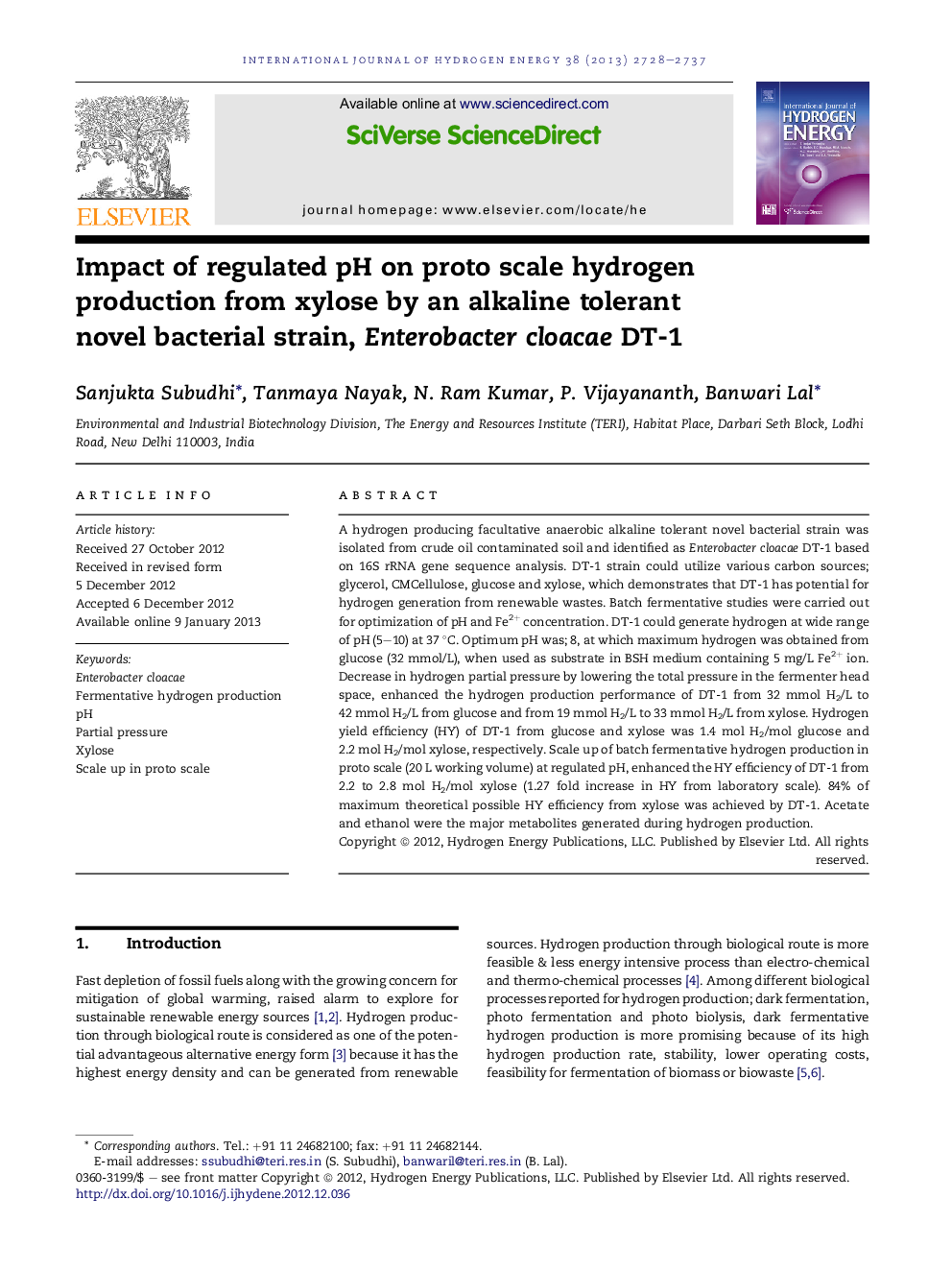| کد مقاله | کد نشریه | سال انتشار | مقاله انگلیسی | نسخه تمام متن |
|---|---|---|---|---|
| 1273803 | 1497539 | 2013 | 10 صفحه PDF | دانلود رایگان |

A hydrogen producing facultative anaerobic alkaline tolerant novel bacterial strain was isolated from crude oil contaminated soil and identified as Enterobacter cloacae DT-1 based on 16S rRNA gene sequence analysis. DT-1 strain could utilize various carbon sources; glycerol, CMCellulose, glucose and xylose, which demonstrates that DT-1 has potential for hydrogen generation from renewable wastes. Batch fermentative studies were carried out for optimization of pH and Fe2+ concentration. DT-1 could generate hydrogen at wide range of pH (5–10) at 37 °C. Optimum pH was; 8, at which maximum hydrogen was obtained from glucose (32 mmol/L), when used as substrate in BSH medium containing 5 mg/L Fe2+ ion. Decrease in hydrogen partial pressure by lowering the total pressure in the fermenter head space, enhanced the hydrogen production performance of DT-1 from 32 mmol H2/L to 42 mmol H2/L from glucose and from 19 mmol H2/L to 33 mmol H2/L from xylose. Hydrogen yield efficiency (HY) of DT-1 from glucose and xylose was 1.4 mol H2/mol glucose and 2.2 mol H2/mol xylose, respectively. Scale up of batch fermentative hydrogen production in proto scale (20 L working volume) at regulated pH, enhanced the HY efficiency of DT-1 from 2.2 to 2.8 mol H2/mol xylose (1.27 fold increase in HY from laboratory scale). 84% of maximum theoretical possible HY efficiency from xylose was achieved by DT-1. Acetate and ethanol were the major metabolites generated during hydrogen production.
► A novel hydrogen producing bacterial strain was isolated from crude oil contaminated soil.
► 16S rDNA gene sequence analysis identified the microbe as; Enterobacter cloacae DT-1.
► DT-1 utilized glucose and xylose effectively for hydrogen production.
► Hydrogen yield efficiency of DT-1 isolate was 2.2 mol of H2/mol xylose at optimum pH 8.
► Hydrogen yield efficiency of DT-1 enhanced from 2.2 to 2.8 mol H2/mol xylose at regulated pH.
Journal: International Journal of Hydrogen Energy - Volume 38, Issue 6, 27 February 2013, Pages 2728–2737